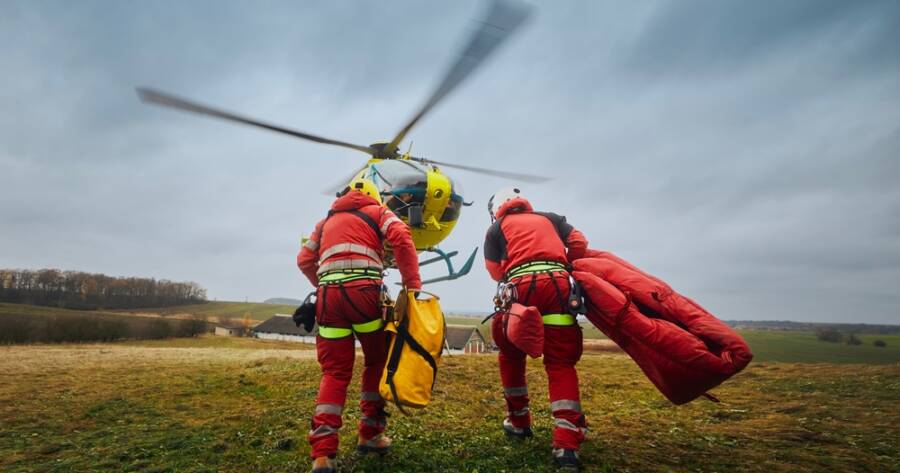Imagine you or a loved one is in need of urgent medical care, and the nearest hospital is hours away by road. This is where air medical transport comes to the rescue. Utilizing helicopters and airplanes, air medical transport services provide rapid, specialized care for patients in critical condition. Fortunately, if you start a search online today, you can learn more about air medical transport.
The Lifesaving Role of Air Medical Transport
When every second counts, air medical transport can be a literal lifeline. These services are designed to swiftly reach patients in remote or inaccessible areas, provide critical care, and transport them to the appropriate medical facility. Whether it’s responding to a car accident, a heart attack, or a medical emergency in a rural location, air medical transport is equipped to handle a wide range of situations.
Swift Response in Remote Areas
One of the primary benefits of air medical transport is its ability to reach remote and rural locations quickly. In these areas, access to advanced medical facilities can be limited, and the time taken for traditional ground transportation could be a matter of life or death. Air medical transport services ensure that medical expertise reaches these areas promptly, bridging the gap between critical care and geographical barriers.
Specialized Care in the Sky
Air medical transport is not just about speed; it’s also about the specialized care it can provide. Medical crews on board are highly trained and equipped to manage critical patients. They can administer life-saving interventions, manage pain, and stabilize patients en route to a hospital. This level of care ensures that patients have the best possible chance of recovery.
A Multifaceted Approach to Emergencies
Air medical transport services aren’t limited to rural areas. They play a crucial role in urban environments too. During traffic gridlocks or emergencies where ground transportation is hindered, air medical transport can cut through the obstacles and ensure timely care. For example, during natural disasters or mass casualty incidents, air medical transport can quickly mobilize to provide essential aid.
Types of Air Medical Transport
Air medical transport services come in two main forms: rotor-wing and fixed-wing aircraft.
1. Helicopter Emergency Medical Services (HEMS)
Rotor-wing aircraft, or helicopters, are ideal for responding to emergencies in urban settings where landing space may be limited. HEMS can reach accident scenes or hospitals swiftly, making them a vital part of emergency medical services in many metropolitan areas. These helicopters are often equipped with specialized medical equipment, allowing medical personnel to provide life-saving interventions during transport.
2. Fixed-Wing Air Ambulances
Fixed-wing aircraft, or airplanes, are often used for long-distance transportation between medical facilities. They are designed for inter-facility transfers and can cover substantial distances quickly. They are equipped with advanced life support equipment, making them suitable for transporting patients who require ongoing critical care.
The Cost and Coverage
While air medical transport is an invaluable service, it’s essential to consider the costs associated with it. Medical air transport can be expensive, with fees varying based on distance, location, and the level of care required. However, in many cases, insurance may cover some or all of the expenses. It’s vital to understand your insurance coverage and the services available in your region.
How to Access Air Medical Transport
Accessing air medical transport isn’t something most people plan for in advance. Emergencies can happen unexpectedly, and during these times, it’s often 911 or the local emergency services that initiate the process. They assess the situation and determine if air medical transport is necessary. The decision is based on the patient’s condition and the proximity and accessibility of medical facilities.
Safety and Regulations
Air medical transport services are subject to strict safety regulations. Pilots, medical crews, and aircraft must adhere to stringent guidelines to ensure the safety of all on board. Additionally, aircraft are meticulously maintained to guarantee they are in optimal working condition. Safety is a paramount concern in the industry, as the goal is to provide life-saving care while minimizing risks.
Start Your Search Today
In times of medical emergency, the speed and efficiency of air medical transport can make the difference between life and death. Whether you live in a remote area, an urban center, or somewhere in between, understanding the role and availability of these services is crucial. Fortunately, if you start a search online today, you can access comprehensive information about air medical transport, including the providers in your region, coverage options, and how to prepare for potential emergencies. Don’t wait until you or a loved one is in a crisis; take the initiative to learn more about this invaluable resource. Your life may depend on it.



